With all the different kinds of watches on the market, which will suit you the best? If you’re going to invest in a watch, it might as well look stylish and feel comfortable on your arm. Plus, it’s wise to invest in a watch that’ll last for years, regardless of how often you wear it.
When people talk about buying a watch, the first thing that comes to mind is style. Do you want a casual watch? A dress watch? Or a work watch? There are plenty of stylish options to choose from, and more! This also concludes the amount of money you’re willing to invest in your watch.
What they say about buying watches is completely true. When you find the best watch for you, you’ll instantly fall in love with it and want nothing else. Research suggests that buyers are extra-protective about their watches. This is because a watch represents a person’s sense of style and sophistication to the world. A watch can be a good conversation starter and make a first good impression, so taking it lightly is not an option.
Without any further ado, there are several factors for you to consider when you’re choosing a brand-new watch. This increases the watch’s value after you purchase them. And the same applies to its durability and efficiency in performance.
1. Choosing the Ideal Watch Type
There’s no fixed favorite among the different types of watch. It’s all a matter of personal preference when you set out to buy a new watch. Your watch needs to showcase your style and personality, like a fashion statement. While there are many other factors to consider, getting a specific type narrowed down to your choice is essential.
Here’s what you really need to know about the different types of watches on the market.
Analog watch
An analog watch comes with a miniature clock-face of 12 hours, with an hour-hand and a minute-hand. Some modern analog watches offer a third second-hand, for better accessibility.
Digital watch
A digital watch comes with the hours, minutes, and seconds displayed digitally in flashy digits. It doesn’t come with a dial or hour-, minute-, or second-hands, like an analog watch.
Automatic watch
An automatic watch is also commonly referred to as a self-winding watch. It runs automatically, backed up by a metal weight, called a rotor. This rotor supplies energy to the watch to function day and night without wearing down.
An automatic watch is more skilled and energy-efficient than an analog and digital watch. That is because it gets it constant power as you move your arm. If kept aside, it can function for at least 48 hours until you wear it on your arm again.
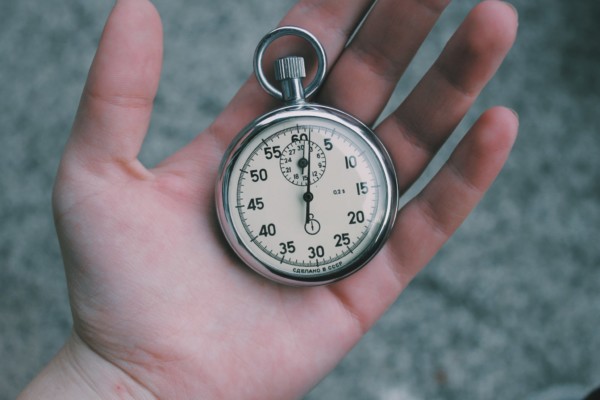
Stopwatch
Most of you already know how a stopwatch functions. It comes with an ergonomic power button on its side which allows you to start or stop the stopwatch. There is another button right next to the power button which allows you to reset the watch as needed.
This kind of watch is best suited for racing and sport events.
Dress watch
A dress watch is the most stylish and sophisticated watch to buy. It comes in different styles including contemporary, modern, or minimalistic. The best part about buying a dress watch it that it can be paired up with all kinds of formal clothing.
Quartz watch
A quartz watch comes with a high-powered electronic oscillator which is synchronized by a quartz crystal. This is one of the most expensive watches you’ll find. Boasting of accurate and efficient performance.
A quartz watch requires battery replacements from time to time. But they’re definitely worth the effort because of its stellar reputation in the watch industry.
Aviator watch
An aviator watch is also commonly referred to as a pilot watch. It’s the toughest and most effective watch on the market. You will find certain aviator watches to be the best combination of both style and durability.
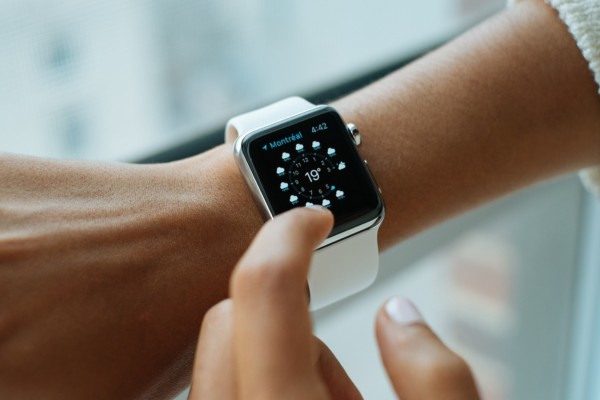
Smart watch
A smart watch, as most of you already know, is the thing of the century. It’s a portable device that is generally controlled by your smartphone, offering tons of exciting and widespread features such as fitness tracking, heart rate monitoring, and app support.
All smart watches are touchscreen, chargeable, and waterproof.
2. Choosing the Right Watch Band
To really understand the basics of your watch, it’s important that you look beyond its type. This includes paying close attention to its band. With the right clothes, finding a high-quality watch band is a part of the effort.
Here’s what you need to know about the different types of watch bands.
Classic Two-Piece Band
The classic two-piece band comes with a basic spring-loaded double-ended pin on both sides of the watch. The band is then strapped on to each pin, with a simple spring bar tool, and is securely wound around the pin. This is the most common watch band to find.
Most leather-bound watches feature this kind of band. In simple tones such as black, brown, or crimson.
Unique Two-Piece Band
The unique two-piece band comes in plenty of variations such as the contrast stitching, double ridge, and exotic leather, and Panerai-style strap. Each has its own unique design and feel to look forward to.
For example, the contrast stitching style will appeal to you if your watch’s dial has all black numbers and hands. As opposed to that, a simple, but contrasting white band goes along on either side of the watch. This adds visual appeal and sophistication to the watch.
Some manufacturers can have this custom-made based on your personal requirements.
Another type of unique two-piece band, which is known as the double ridge strap, offers two closely-stitched layers of fabric for added appeal.
The Rally Band
The rally band is generally made of leather, but not in all cases. It comes with a more breathable and flexible strap than standard bands. If you prefer using minimalistic designs, opting for a rally band is good for you. It works for thinner and smaller timepieces.
The Bracelet
Most of you are aware of what a “bracelet” looks and feels like. But what you don’t know is that the bracelet goes way back into history with watches. They’ve been used as bands for centuries to add visual appeal and sophistication.
That said, watch bracelets are often found in water-repellant watches and for casual wear. Most standard bracelet watches can be adjusted to offer a tighter and more comfortable fit. But tweaking it requires you to head over to a local jeweler’s shop, and the added expense.
The NATO
This stands for nylon watch bands. Over the years, nylon watch bands have gained a lot of popularity, offering consumers the pop of color for casual and formal wear.
3. The Different Types of Band Material
Apart from its style, watch bands are made of a variety of materials ranging from ceramic, fabric, to plastic or rubber. The choice of which band to choose is entirely on you, based on your personal preference and environment.
It’s never a bad decision to own different watch bands for safekeeping. So, let’s look at the basics of each watch band material available on the market.
Leather
Leather is one of the commonest watch bands in the industry. It makes up a classic style, ranging from a variety of both colors and prints. For example, you can get leather in other faux leather styles as well as in cowhide, exotic alligator, or crocodile.
Plastic
Plastic watch bands are generally used among sport or casual watches. It comes with durable features such as impact resistance, shock absorption, and moisture resistance. Plastic watch bands last longer, on that same note, as much as they offer better grip and comfort around the arm.
Rubber
Rubber watch bands are quite similar to plastic bands. They’re super-comfortable, durable, and effective. Dive and sport watches suit rubber watch bands, because of its extensive and rugged features.
Stainless steel
Stainless steel bands are a combination of steel and chromium, which makes it an irresistible find. Most people opt for stainless steel prefer the use of only precious materials for the added sophistication and style. Stainless steel bands are durable, rust-resistant, and stronger than other bands.
Fabric
Fabric watch bands come in a variety of styles, colors, and prints. You can opt for specific or a combination of different textiles for casual wear.
Ceramic
Ceramic watch bands are the result of two metals compressed together using heat. Also resulting in a very strong and unbreakable material with gloss and shine. Ceramic bands are good for formal and dress wear. Like stainless steel, ceramic watches are meant to resemble a piece of jewelry.
4. Does Size Matter?
You’re much closer to finding the right watch. The next thing you need to look forward to is the right size. This is to make sure you find the right fit for you. Everyone has a different wrist size, so you want something that is tight enough that the band doesn’t slide down your wrist. And it’s loose enough that the band doesn’t cut blood circulation or leave a mark on your wrist.
All these factors must be taken into consideration when choosing the right fit. Here are the different factors of a watch that make up its size and build.
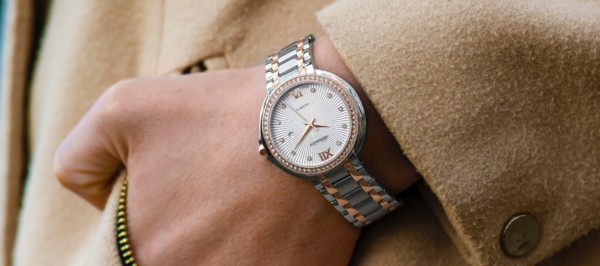
Case diameter
A watch’s case diameter is the diameter of the dial of the watch. A larger case diameter is better suited for dress wear, while anything below 38mm is good for jewelry that most women prefer.
The best case diameter measurement for small to medium wrist size is 38, 40, and 42mm. Larger case diameters range somewhere above 44 to 48mm.
Case thickness
Modern watches come with thin cases, as opposed to thick mechanical watches that have been worn since years. The case thickness also depends on its diameter. For example, if a watch has 40mm diameter, then the case thickness would waver around 7mm.
For watches with 44mm or more diameter, the thickness goes above 9mm.
Band width
Larger wrists prefer wider bands that range somewhere between 22 to 24mm. Meanwhile, smaller wrists prefer narrower bands ranging somewhere between 18 to 20mm. This also depends on the case thickness and diameter of your watch.
For example, a watch with 40mm case diameter requires a suitable band width of at least 20mm or more. The option to choose between a wide or narrow band width also depends on personal preference.
Apart from these basics, the only way you can determine the right size or fit for you is by a size test. Move your watch up and down your wrist to check if it leaves behind any noticeable mark on your skin.
5. Knowing the Movement Types
There are 3 main watch movement types to look for when choosing a new watch. They are battery, mechanical, and quartz.
Battery
This is the most common and inexpensive watch movement to buy. Basic digital watches found in clothing stores or department stores offer such kinds of watches. They are battery-powered and stored watches that last for a good amount of time. Only with proper maintenance and care.
Mechanical
Mechanical watches adopt a very different kind of dial movement technology. Mechanical movements offer more complex, but sophisticated technology as compared with quartz movements. That’s precisely why most people prefer using mechanical movement over quartz today.
Mechanical watches have been used since the beginning of watches in history. Even though the technology of mechanical movement watches has changed much over the years, it’s still as effective as it is efficient.
Mechanical movement makes use of energy from a durable wound spring. Unlike any other movement type, it doesn’t use energy from a battery. The wound spring stores the energy and transfers it for better movement through gears and springs, resulting in a high-powered and accurate watch.
There are two different variations in mechanical movement. And they manual and automatic movement.
Manual movement works without a rotor, which is a metal weight that transfers energy in terms of hand movement of the person wearing the watch. Automatic movement works with a rotor.
Unlike automatic movement, powering up manual movement is easier, even if you do not wear the watch for a long period of time. On the other hand, you will have to garner some quick wind to power an automatic movement watch for an initial kick-start.
Quartz
Quartz movement demands very little effort in terms of maintenance. It does require battery replacements, but not as often as a battery movement watch.
Because quartz movement demands battery-powered operation, it’s not at all costly. But they do offer only standard benefits of a watch, without the ultimate sophistication and craftsmanship of a mechanical watch.
A quartz watch works with the help of a battery, which is its primary power source. The battery is responsible for sending an electrical current through a tiny quartz crystal to create dial vibrations. This is what keeps the motor running and the dials moving, which drives the motor until the battery runs out of charge. Which is not that often, to be fair. In terms of dial movement, quartz offer individual second ticks as opposed to a sweeping motion of a mechanical watch.
6. Is It Durable?
As with any large purchase, making sure what you buy is durable is equally important. You need to know what durability features your watch has to offer. A watch can offer only a set of features, limited to its design and function. So, taking durability into serious consideration when looking at elaborate models is critical. It also can help save effort and cut back costs!
That said, the first feature you’d want to look for when choosing your ideal watch is water resistance. The level of resistance on any watch depends on various factors. Such as activity, immersion, and range of motion.
If you’re looking to buy a watch for sports, such as running or cycling, buying a sweat-resistant watch is important (typically key feature in the best cycling watch or best GPS running watch). Generic moisture resistant watches offer plenty of protection from sweat, humidity, and other similar factors. Meanwhile, for outdoor use, buying a watch that protects itself from spills and rain is also beneficial.
Getting back to water resistance, higher levels of water resistance varies from 50m to 1000m resistance. This is ideal for scuba divers (who would need the best dive computer watch), swimmers, and everything that falls in-between. The durability factor on any watch depends solely on what you choose to use it for.
Another factor of durability is the way the watch is manufactured. If you’re considering well-known brands, it’s imperative that they have a good product and customer reputation. In case you receive a faulty watch and you’ve paid a higher amount for it, contacting customer service for a quick replacement is imperative.
You can’t tell by looking at a watch that it’s durable and its manufacturer reliable. A little bit of research on both ends is important.
Lastly, the battery life of a watch should not be limited to only its build. For example, digital watches can live as long as 10 years without compromising on function and feel. This is important if you wish to buy an automatic or mechanic watch for a higher price. There is a wide variety of affordable watches with the same shelf life, especially affordable automatic movement watches.
7. Fixing a Good Price Range
Deciding on a budget is not that simple for a watch. Most people buying a new watch are more likely to spend a higher amount for the added benefits in terms of design and durability. Before you finalize a purchase, it’s important you have a budget range in mind. So, you know what to watch out for.
You can buy a watch as affordable as $25 or as expensive as $10,000. This depends on the brand, style, material, movement, and band of the watch.
Here’s what you can expect to get for a certain price range.
Under $300
It’s very common to find watches under $300, which is considered as a modest budget for a decent quality watch. For this price range, materials such as leather, stainless steel, and cloth would work. This includes the casing and band of a watch.
In terms of design, you can also expect to buy quartz movement watches with low to moderate level of water resistance. Sport watches, to be particular, are best bought for this price budget. Even though you will not get to experience more technologically advanced features of a watch, the good quality and deliverance will keep you satisfied.
More importantly, watches under $300 offer durable steel casing, water resistance, and good display. You can wear it on a daily basis or choose to wear it for special occasions such as office parties, get-togethers, etc.
$300 to $700
Watches under this price range are a step above in terms of design, function, and durability. Materials such as plastic, rubber, cloth, leather, and stainless-steel fall under this price range. Brands that offer quartz movement, but at a technologically higher standard, offer such prices.
Buying a watch under this price range has far better benefits. For example, you can invest in a strong, durable, and accurate watch made of better materials and packed with advanced features. They good for you because they’re sturdier than other watches. So casual wearers can opt for a watch that falls under this price range.
$750 to $2000
This is what you should expect if you want to buy a high-end, sophisticated watch. These watches come in stainless steel, leather, titanium, ceramic, and such similar materials. They offer plenty of options in terms of rust-, moisture-, water-, and dust-resistance. Plus, most of them offer quartz and mechanical movements with versatile analog faces.
Watches this expensive are also scratch-resistant for long-lasting use. So, investing in such a high-quality watch has its very own perks! At the end of it all, you don’t want to invest on something that doesn’t have returns. And watches this expensive offer returns in terms of advanced features and a strong body.
8. Where’s the Best Place to Buy Watches?
The last thing you need to consider is where you want to buy your watch. That’s the end of your purchasing decision. This factor won’t tell you where exactly to buy a new watch, but it will list out all the factors you need to consider for finding a location.
This includes price, trust, and service.
Do you trust the department store or person you’re buying your watch from? In case of any replacement, will you be able sell or repurchase a watch from that particular store? If you’re dealing with a small retailer, individual dealer, or a large department store, knowing who you can have complete trust in is very important. Because while working with high-value goods, such as watches, anything can go wrong. Through no fault of your own, of course.
In case you receive a defective timepiece, your seller should be able to fix the problem or return back your money on the spot. And the way to go about it is check the store or dealer’s selling policies. What’s the policy on working with defective or damaged products? Will your manufacturer repair the problem or offer you a brand-new product in excellent condition?
Such policies lay out both minor and major problems concerning new products. And if your dealer has a tie up with local repair shops, finding the ideal fit is much simpler and less costly. Even though it means the process of fixing any particular problem takes a long time.
It is very unlikely that you will be given a fake product from a certified department store or a small dealer. But if that’s the case, keeping your options open by asking around in different stores is essential.
The second biggest factor for buying a watch is price consideration. Apart from the design and function of a watch, where you buy it from also plays a role in price. If you’re looking to invest a good amount of money in an expensive watch, buying it from a high-end department store that offers such price ranges is advisable. Based on the watch’s standard retail price, it would be a good idea to place your trust in a department store than an individual dealer, especially when you’re dealing with a lot of money.
And if you’re considering buying online, check for major retail sites that boast of a huge inventory of both products and customer reviews. Buying from a brand boutique online can be a safer option as they’re better security and customer feedback. And online stores give much better prices and bonus features for a good purchase.
The last factor to look forward to is service. Which department store, individual dealer, or online store offers the best service? Do they pick up your phone or reply back to your email? Do they respond to your queries or complaints as promised? And what kind of offers do they offer in response to your feedback? Demanding respect and authenticity in exchange of a purchase is kind of a big deal. A good retailer will do everything in your best interest. And not the other way around.

Final Thoughts on Buying a New Watch
The way watches are marketed in the industry has changed the face of the watch industry, at large. Most consumers opt to pay for the brand name, rather than the watch’s distinctive features and design. As much as this is acceptable, it isn’t the right way to go about finalizing a purchase.
Here’s a simple run-down of picking a nice watch:
- Figure out your ideal type of watch.
- What kind of watch band do you prefer? And its material quality?
- Choose the correct fit for your wrist.
- Do you want an affordable or an expensive watch?
- Make sure the watch you’re buying is durable.
- Does it suit your style, whether dress or formal or casual?
In any event, researching what you buy and how plays a major role in investing in a high-quality, valuable watch. This involves the question, “How to make a final purchasing decision?”
The right way to answer that question is with science-backed research and awareness. You need to weigh factors and features before deciding the value and price of a watch. And what happens after you buy the ideal watch for you? You realize that you could have just as easily fallen for a more expensive watch with the same advanced features of the watch you bought for a cheaper price. It’s a deal well done, if you ask me!
When I want to buy a new fashion accessory I list down all my favorite picks and take a close look at each of them. This includes analyzing its style, type, color, material, durability, and efficiency. And if none of my favorite watches make the cut, I look for those that do. The whole point of choosing a new watch is to consider factors you don’t already know about. What you will be measuring now for quality will have an impact on its shelf life.
The last thing I’d like to talk about before signing off is this: what about warranty? Most prominent brands offer warranties up to 2 to 7 years after you’ve taken possession of the watch. So, under this warranty, any sort of repairs or damaged will be taken care of by the manufacturer. This means you are in no way entitled to pay a single buck for repairs and maintenance.
After this period is over, any sort of attachments, replacements, or repairs are a matter of your financial concern. Some watches are made to last a lifetime, but a warranty shows show respectable and reliable your manufacturer is. So, demanding a product that is guaranteed for a specific period of time, be it 2 or 5 years, is a good way to place trust in a particular brand.
- How to Choose a Watch, According to Science – 8 Factors to Consider - December 5, 2017
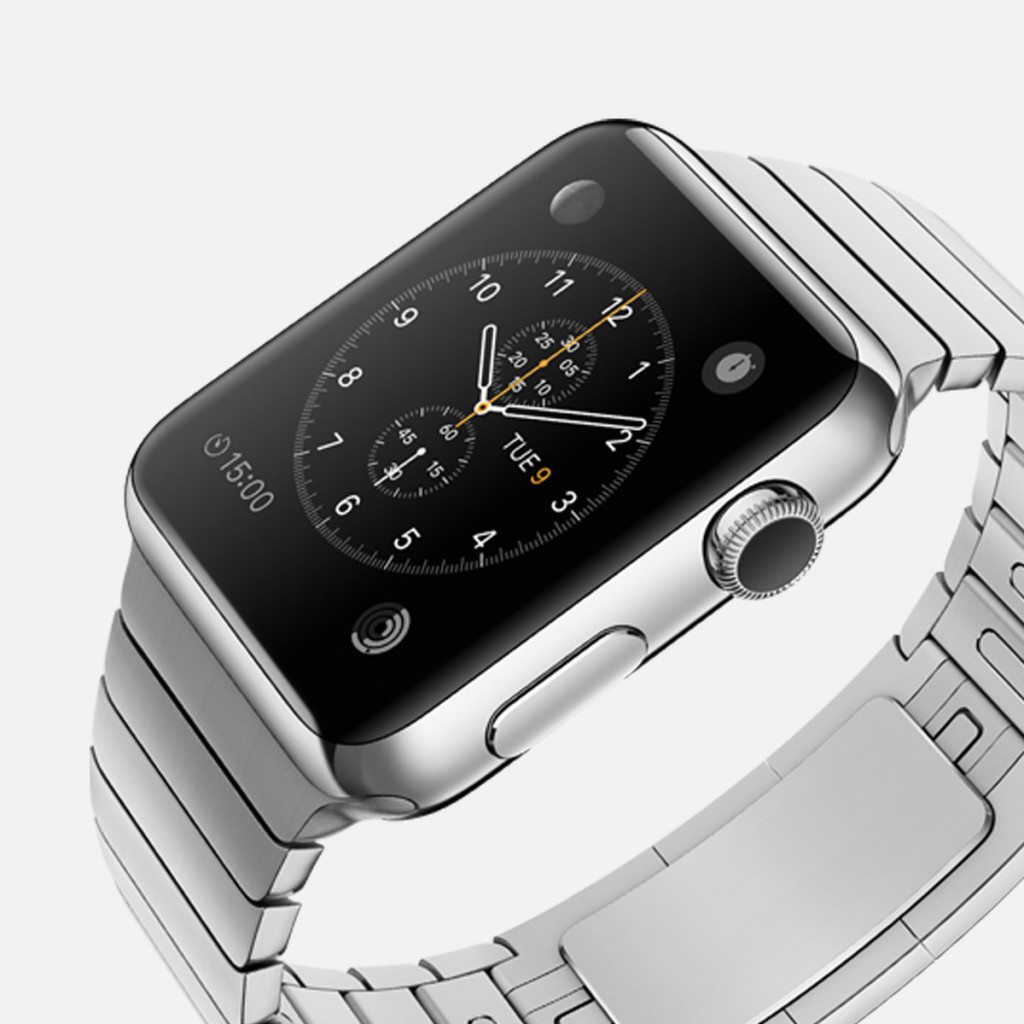

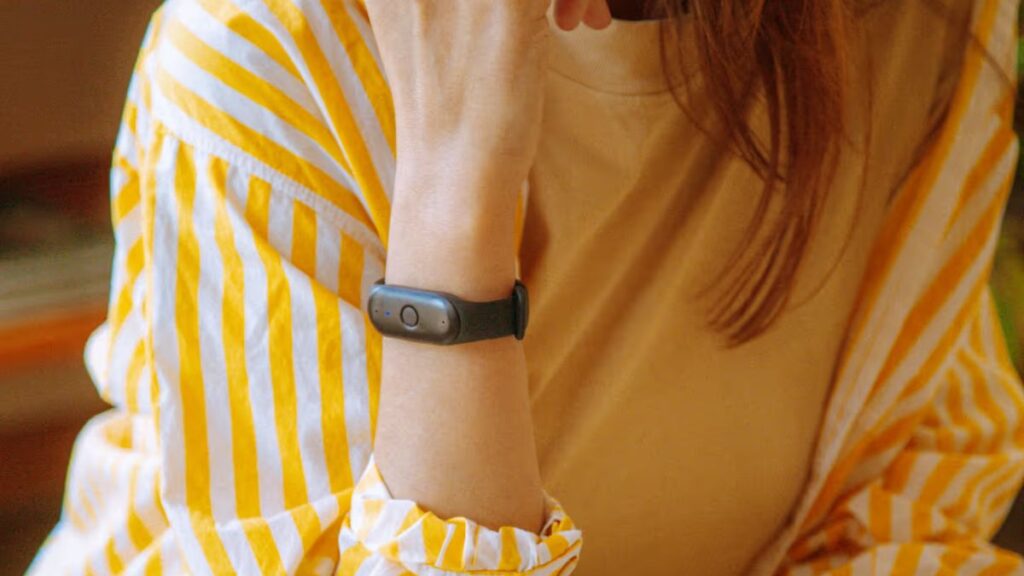
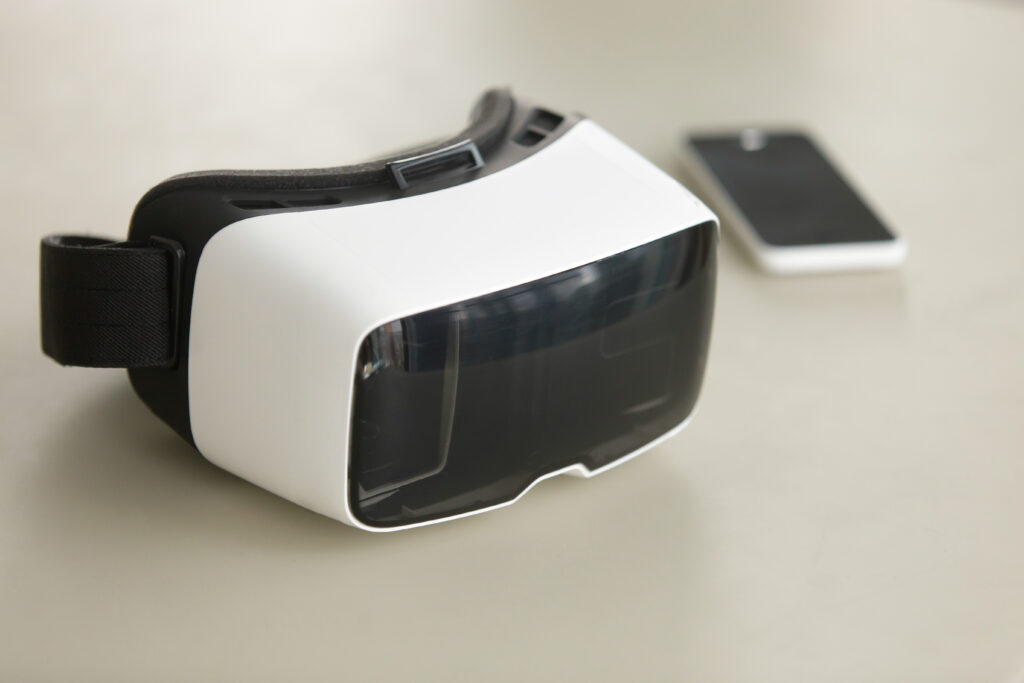
Awesome post and very informative as well. Thanks for sharing this guide of watches with the readers so that even they can come to know various things about watches which they were unaware about, I would like to share it with my friends as well.
There is so much wrong with this article, it’s hard to know where to start. Was it written by a 6th grader?
Quartz watches are actually among the cheapest. No indication that mechanical watches are not accurate. No mention about radio-controlled watches. Not one word about titanium as a material. Or sapphire or mineral crystals.
Get this garbage off the internet. Already.
For the most part I would agree, though quartz watches can run from a few dollars to thousands. Another case material that was ignored was ceramic though it is pretty rare.
The part that jumped out at me was except for the original Hamilton electric and the Bulova Accutron, both ancient models, all battery watches are also quartz, regardless of display.
I would say that besides the general types of watches, inside the aesthetics, I have been following up a minimalist sense for design. I believe a society with a more austere sense of fashion is less prompt to be tricked by emotions (both in advertising and in politics, for example). I have written here four basic rules to follow up regarding selecting a watch: https://soulfeedback.blogspot.com/2019/01/how-to-select-watch.html